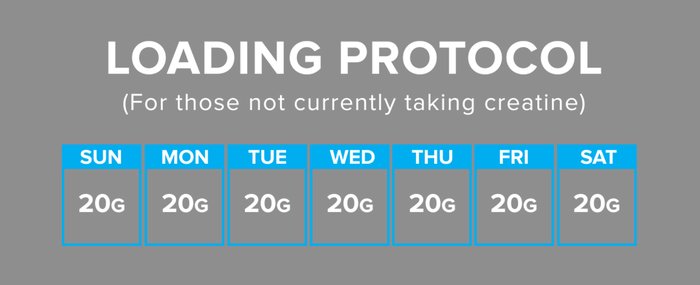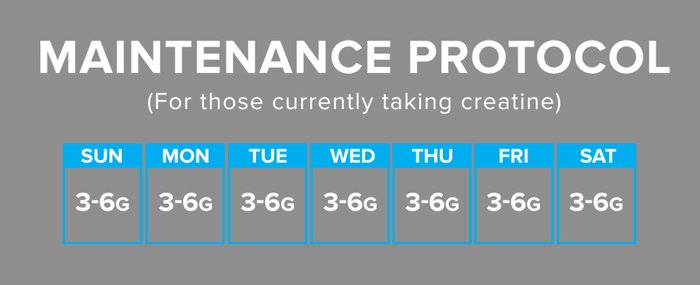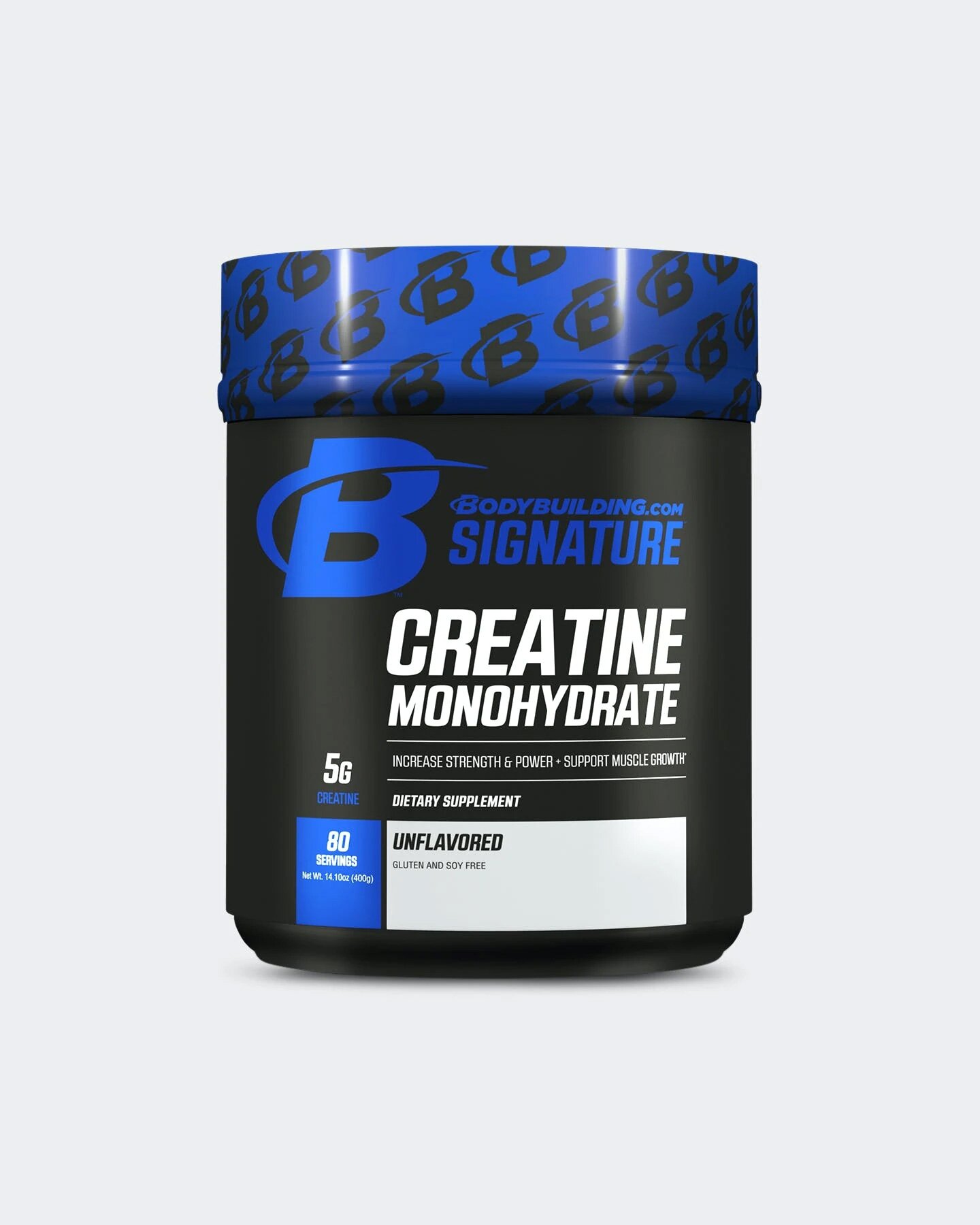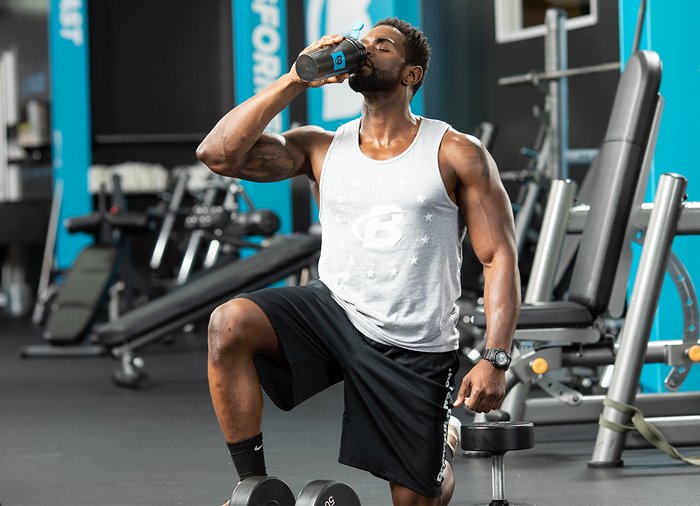You may think that the majority of research into creatine would be about if it works. But at this point, that's pretty clear: It does!
For the majority of people, creatine supplements help add muscle mass and strength, improve their training, and help them recover better between training sessions. Next question!
This "next question" is where the confusion usually begins. How should I take creatine for the best results? Is a loading phase necessary? Is it better with carbs or protein? How do I calculate my creatine dosage? The questions go on and on.
If you want to dive deep into the benefits and science, check out the article "Your Complete Guide to Creatine Monohydrate." But if you're looking for the quick-and-dirty guide to taking this essential supplement the right way, you're in the right place. Let's try and clear up some of the confusion!
Consistency Matters Most!
For every person taking creatine the right way, there are probably two who aren't. This is unfortunate, because the best ways to take it (and there is more than one way) are all very simple.
"Creatine is not readily assimilated into muscle, as many people would think," says Darryn Willoughby, Ph.D., in tip 4 from the video "5 Different Ways to Get More from Your Supplements." "Instead, it takes a while to saturate the muscle."
For this reason, if you've been simply taking a pre-workout that contains creatine monohydrate a few times a week and trusting that it would be enough to help you get huge…it's probably not. Sorry.
With that in mind, you have two options to get your blood creatine levels up where they need to be: the loading protocol, and the daily low-dose protocol. Here are the pros and cons of each.
Method 1: Creatine Loading
The most common way people will take this supplement is to start off with a "loading phase," which is designed to fully saturate the muscles' stores. Then, they move to a "maintenance phase" where they take lower daily doses to keep the levels where they need to be.

Pro: It works! Adam Gonzalez, Ph.D., a supplement researcher and natural bodybuilder, favors the loading approach.
"Research has shown the most effective way to rapidly increase intramuscular creatine concentrations is a loading method," he explains. "A typical loading protocol consists of consuming high doses, like 20-25 grams per day, split between 4-5 daily doses, for 5-7 days. Following the loading protocol, athletes can generally maintain stores with a daily maintenance dose of 3-5 grams per day."
Jose Antonio, Ph.D., the co-founder of the International Society of Sports Nutrition, also labels the loading protocol "something you should definitely do" in his video "8 Questions About Creatine Answered."
Con: Possible side effects. Despite what some gym bros might tell you, creatine will work just fine without a loading protocol. And the standard loading protocol can be a bit unpleasant for some people.
"No, a loading protocol is not necessarily required," Gonzalez admits. "And the larger daily dosage may cause gastrointestinal discomfort for some athletes."
If you're someone who has tried monohydrate in the past but didn't like the bloating or stomach distress that came with it, then you should definitely try the daily low-dose approach.
Method 2: Low-Dose Daily Supplementation
The alternate method is to simply take 3-5 grams of a creatine supplement each day, without loading. In about three weeks, this approach will get your muscular levels to the same point as a loading protocol.

Pro: It's simpler, and it still works. "With creatine becoming so popular, many people have ideas about the best way to take it to maximize its effect," notes Willoughby, whose by-line has been on a number of creatine studies. His advice? "Keep it simple. The most important thing is just to take it daily."
Willoughby calls taking 3-5 grams daily "the most effective, simple way to supplement." Over time, that protocol has been shown to produce strength and size gains on par with loading.[1-2]
Con: Possible lower levels, and more time. Research has shown that loading could result in higher overall levels, to the tune of 10-44 percent.[3] So what if you temporarily get a little bloated or have a slight tummy ache? And some research has indicated that the loading phase doesn't even need to be a week long. It could be as little as 2-3 days and still be effective, as long as you nail the protocol and take 3-5 grams daily afterward.[4-5]

The Verdict: Should I Load?
Both approaches work, as long as you follow up with a consistent "maintenance dose" of 3-5 grams per day afterward. It's just a matter of preference, and a willingness to endure some slight discomfort.
When Should I Take Creatine?
You have four options: Before a workout, after, both, or "whenever." Fitness journalist Adam Bornstein breaks down the options in his article "Before, After, or Whenever: The Best Time to Take Creatine," but the short answer is that they can all work.
Researchers have looked into the differences between taking creatine at different times, and differences have been minor. For this reason, Bornstein is in the "take it whenever, as long as you take it" camp.
However, other researchers think there may be slight advantages to taking it at specific times. For example, Jim Stoppani, Ph.D., recommends taking it before and after a workout for maximum benefit.
Likewise, Jose Antonio, Ph.D., who co-authored a study on creatine timing in 2013, says there may be a slight advantage to taking it post-workout specifically.
However, Antonio adds that once you have been taking creatine consistently enough to have full reserves in your muscles, it matters far less when you take it. Only if you're not taking it regularly does there appear to be a difference.

How Do I Take Creatine?
Because it's tasteless, odorless, and easily dissolves in any fluid, creatine monohydrate is perhaps the easiest supplement to take. Just dump a scoop in water, protein powder, amino acids, or whatever else you drink throughout the day, swish it around, and drink. You won't notice it at all!
Most scoops are 5 grams, which is a fine dose for athletes of all size. If you're relatively small or lightweight, you can probably get by with 3 grams, or just over half of a normal scoop.
There is some research showing increased uptake if taken with carbs or protein, but it will work without these additives, as long as you take it consistently.[2] However, if you're trying to do a brief loading protocol, like 2-3 days instead of the normal 5-7, taking it with carbs is probably a good idea.
One study showed that taking around 100 grams of carbs with 5 grams of creatine increased total muscle creatine by 60 percent.[5] Another showed similar results by taking 5 grams with around 50 grams of carbs, and 50 grams of protein—the equivalent of two scoops of protein and two bananas, a cup of grape juice, or a cup of cooked rice.
What if I Miss a Day?
Once you've achieved saturation, either by a loading protocol or consistent low-dose supplementation, don't sweat it if you miss a day or two. Your levels can stay elevated for as long as 4-6 weeks.[6,7]
After that, just keep taking it, and keep enjoying better workouts and results!
References
- Willoughby, D. S., & Rosene, J. (2001). Effects of oral creatine and resistance training on myosin heavy chain expression. Medicine and Science in Sports and Exercise, 33(10), 1674-1681.
- Willoughby, D. S., & Rosene, J. M. (2003). Effects of oral creatine and resistance training on myogenic regulatory factor expression. Medicine and Science in Sports and Exercise, 35(6), 923-929.
- Greenhaff, P. L. (2001, September). Muscle creatine loading in humans: Procedures and functional and metabolic effects. In 6th Internationl Conference on Guanidino Compounds in Biology and Medicine. Cincinatti, OH.
- Steenge, G. R., Simpson, E. J., & Greenhaff, P. L. (2000). Protein-and carbohydrate-induced augmentation of whole body creatine retention in humans. Journal of Applied Physiology, 89(3), 1165-1171.
- Green, A. L., Hultman, E., Macdonald, I. A., Sewell, D. A., & Greenhaff, P. L. (1996). Carbohydrate ingestion augments skeletal muscle creatine accumulation during creatine supplementation in humans. American Journal of Physiology-Endocrinology And Metabolism, 271(5), E821-E826.
- Vandenberghe, K., Goris, M., Van Hecke, P., Van Leemputte, M., Vangerven, L., & Hespel, P. (1997). Long-term creatine intake is beneficial to muscle performance during resistance training. Journal of Applied Physiology, 83(6), 2055-2063.
- Candow, D. G., Chilibeck, P. D., Chad, K. E., Chrusch, M. J., Davison, K. S., & Burke, D. G. (2004). Effect of ceasing creatine supplementation while maintaining resistance training in older men. Journal of Aging and Physical Activity, 12(3), 219-231.

